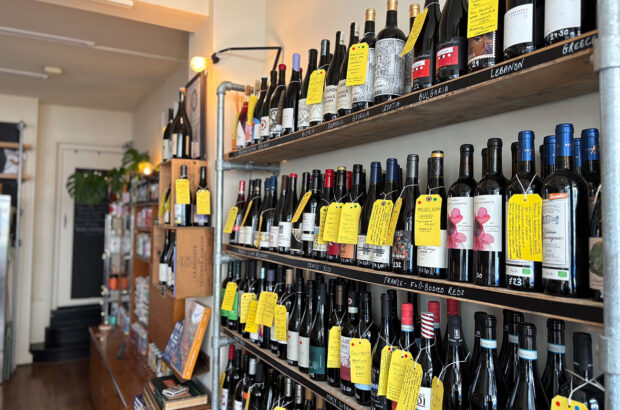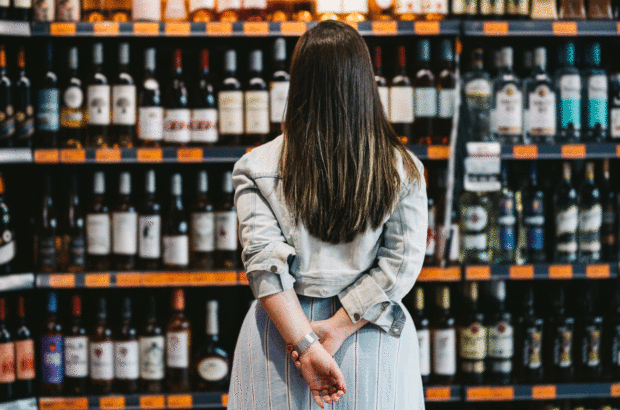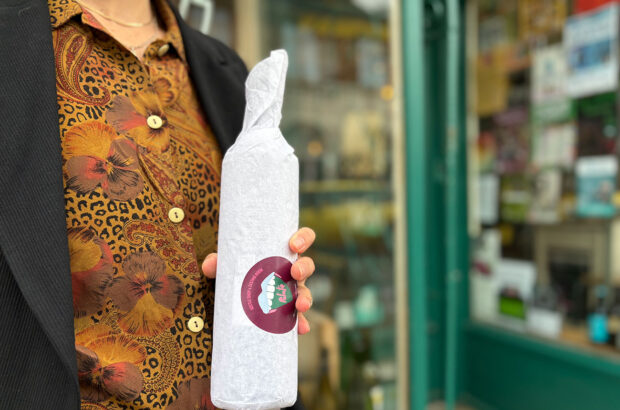Generally speaking, I prefer to know what things are before I put them in my mouth. The wine world, however, maintains a near-obsessive fixation on the opposite practice: Tasting blind a game whereby you might find yourself paying $90 for a bottle of you-don’t-know-what simply for the love of sport.
As it happens, when the simple act of drinking beautiful things and deriving pleasure therein grows utterly proasic and loathsome (woe is us), we game-ify consumption by challenging one another to identify a grape variety or a region – as well as producer and vintage for the true connoisseurs – without laying eyes on a label.
I’ll admit: It’s fun. Who among us can resist a bit of friendly competition – or the opportunity to flex some performative wine knowledge? It’s the sommelier’s iteration of ‘Is this your card?’ And while most commonplace human beings will answer correctly approximately once for every 286 blinders, there’s a tenderness in the uniform wrongness, even amongst seasoned professionals.
It aligns us in the understanding that, however highly trained, there’s no such thing as complete and total mastery in this arena.
‘People love watching us blind taste incorrectly – not that we don’t want to be right,’ says Ryan Goydos, one half of the much-beloved wine influencer duo, the Super Vino Bros. ‘But coming up with a theory about what a blinder is still requires lots of knowledge – and the fact that we’re consistently wrong makes our audience feel like the learning curve isn’t embarrassing.’
The brothers, who have documented their steady, humble foray into wine expertise – much to the delight of ‘The Internet’ – have been running a blind tasting series on TikTok and Instagram since the latter half of the pandemic. Each of their videos, mind you, has hundreds of thousands of views – and never once have the two identified a bottle correctly. ‘I know we’re not great at it, but it’s still fun,’ says Goydos. ‘It’s like doing experiential flashcards.’
He’s right: The back and forth of hypotheses tethered to various rationales – incorrect or otherwise – is indeed a welcome learning opportunity for anyone building a knowledge base re: key characteristics of certain regions, and certain varietals. That said, when it comes to blinding, it would seem that we’ve become nothing short of obsessive.
‘Blind tasting is literally the most annoying thing you do,’ a friend told me recently at dinner after our sommelier, a longtime friend, brought over a glass for me to blind. I’m sure I said something devastatingly insufferable like ‘ugh, my palate is so much better trained in French wines’ before proceeding to half-listen to whatever beautiful, essential poetic fact about life and liberty my friend was espousing while I aerated sip after sip, quietly muttering, ‘Nebbiolo? No, couldn’t be. Not Sangiovese. A BLEND, perhaps?!’
I won’t defend my behaviour – it’s punishable at best. But in a certain sense, the act of blind tasting gives new texture to this breezy act of hedonism: It metamorphoses drinking into an opportunity for near-meditative contemplation; lulls consumption into slow motion. It’s about tasting, not ingesting – a pleasant reminder that our fixation on wine does not derive exclusively from the product’s alcohol content or its international caché.
It must be addressed, however, that the language here is indisputably insensitive.
To throw ‘blind’ around recklessly as if it were a term untethered from a very distinct and prohibitive human reality is thoughtless and lacks awareness, to say the least. ‘As society evolves, certain words become outdated, and it can be hard to change our habits,’ says Aidy Smith, a prominent broadcaster, journalist and television personality in the food and drink space – as well as a vocal neurodivergence, disability & LGBT+ advocate. ‘For example, let’s look at the word spastic. For years, this was a completely acceptable term for someone like me with Tourette Syndrome. But over time, the word became outdated. As an adult, I’ve never been called this nor would I ever expect to be. Perhaps there is a natural progression for what we have historically referred to as a blind tasting, too.’
However innocuous it may all seem, for those who have never been vision impaired, it’s hard to imagine what hearing the word out of context might trigger. ‘There will likely be people reading this who raise an eyebrow at the suspicion of yet another woke brigade movement,’ says Smith. ‘But it doesn’t seem so difficult to try to change how we talk about this aspect of wine in order to spread a little more love, joy and understanding to those who it may impact negatively.’
At bottom, I maintain: The concept of tasting, sight unseen, is well-intended enough – poetic, even – and our obsession therein is justifiable. Our context, however, could use some work, be that a matter of misdirected verbiage or the tables at which we choose to partake.







